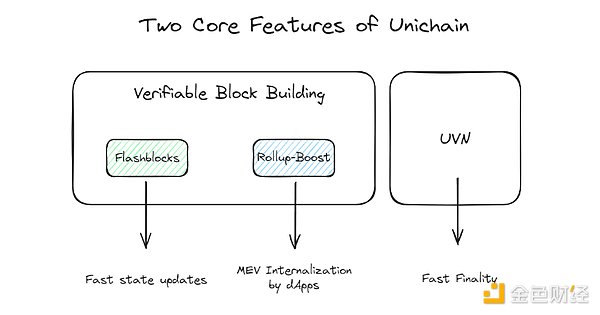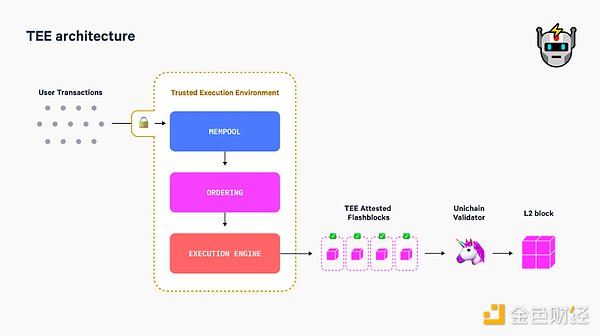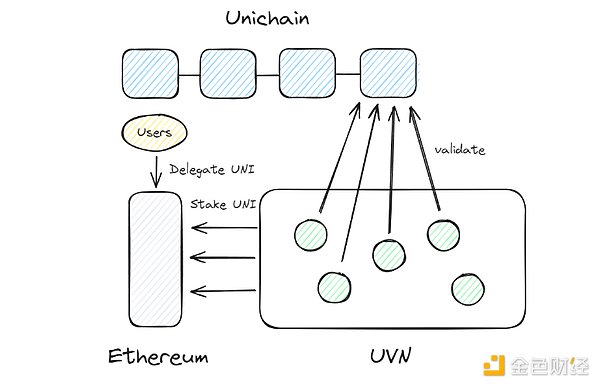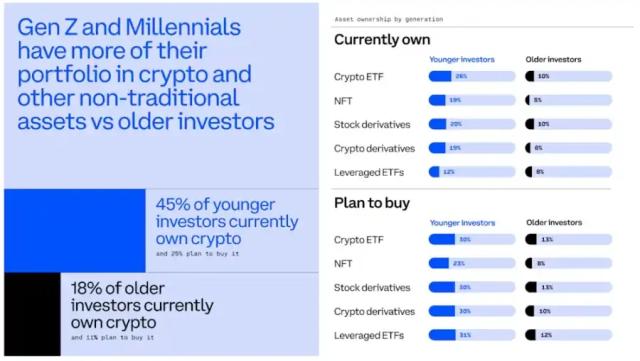Author: 100y, Crypto Researcher; Compiled by: 0xjs@Jinse Finance
Unichain Unveiled. Breaking News in the Crypto Industry: The leading AMM DEX Uniswap officially announced its L2 solution Unichain on October 10th.
A few years ago, I had speculated that Uniswap might develop its own network and was skeptical due to potential user experience challenges. However, with the unveiling of Unichain, my prediction has been proven wrong.
To put it bluntly, the Unichain whitepaper is only three pages long, but a closer look reveals it to be a masterpiece. It combines Uniswap's long-standing focus on UX, Flashbots' latest MEV research, and the expansive ecosystem built by the OP-Stack. Although concise in content, the whitepaper covers complex topics such as TEE, priority ordering, and MEV taxes, which may be challenging for readers unfamiliar with the MEV basics. Therefore, this article aims to quickly and simply break down Unichain's key functionalities for better understanding.
1. The Problem
Uniswap is the leading AMM DEX in the Ethereum ecosystem, currently deployed on 25 networks with a total TVL of around $4.5 billion. Although Uniswap is already one of the most successful protocols, it still faces the limitations of the networks it operates on.
For example, the Ethereum network provides vast liquidity but has relatively low scalability and is vulnerable to malicious MEV (Maximum Extractable Value) attacks. To address these issues, various rollup solutions have emerged, but most are currently operated by a single sequencer, leading to potential single points of failure, such as liveness failures and censorship regimes.
Furthermore, the block construction process on Ethereum and most Rollup networks involves a public mempool, creating an environment where users (searchers) can extract MEV (both good and bad) from other users. Additionally, due to the structure of the MEV value chain, there is an imbalance where value is disproportionately captured by the proposers rather than benefiting the users.
2. Entering Unichain
2.1 Overview

Unichain is an Ethereum Optimistic Rollup based on the OP Stack, launched by Uniswap, Flashbots, OP Labs, and Paradigm, aimed at solving the aforementioned problems. Unichain provides several key advantages through 1) verifiable block building and 2) the Unichain Verification Network:
Rapid state updates
Enabling applications to extract and internalize MEV
Fast settlement through rapid economic finality
In addition to being an OP Stack-based Rollup, Unichain also plans to participate in the Superchain ecosystem. Beyond its native fast settlement capabilities, this integration is expected to provide users with a seamless liquidity experience through cross-chain solutions within the Superchain ecosystem.
Now, let's take a closer look at how Unichain achieves these functionalities.
2.2 Verifiable Block Building
Verifiable block building is achieved through Rollup-Boost, a feature developed in collaboration with Flashbots. Rollup-Boost provides two key functionalities: Flashblocks and Verifiable Priority Ordering.
2.2.1 Flashblocks
 Flashblocks are a form of pre-confirmation (which we will discuss in more detail later) published by the TEE builders. Unichain generates partial Blocks, splitting a single Block into four parts, creating a partial Block every 250 milliseconds and sending it to the sequencer.
Flashblocks are a form of pre-confirmation (which we will discuss in more detail later) published by the TEE builders. Unichain generates partial Blocks, splitting a single Block into four parts, creating a partial Block every 250 milliseconds and sending it to the sequencer.
The sequencer continuously downloads these partial Blocks while executing transactions, providing early execution confirmation for users. The sequencer guarantees to include these partial Blocks in the final proposed Block. This process can accelerate state updates, reduce latency, improve the user experience, and mitigate malicious MEV.
2.2.2 Verifiable Priority Ordering

2.2.2.1 Priority Ordering
Priority ordering is a block construction mechanism proposed by Paradigm's Dan Robinson and Dave White. It assumes that the block proposer only orders transactions based on priority fees and does not perform any censorship or delay operations. This model is only viable in the presence of a single or trusted block proposer. In competitive environments like Ethereum L1, where multiple proposers construct Blocks, priority ordering is not feasible.
The purpose of the privacy order is to allow mainnet dApps to levy an MEV tax on the transactions they interact with, thereby extracting a portion of the MEV value. This value can be used internally by the dApp or redistributed to users. The MEV tax is a fee charged by the smart contract on the transaction, which can be set based on the transaction's priority fee. Let's look at an example.
The 100y DEX on Unichain L2 wants to directly extract the MEV value from the MEV trades happening on its exchange. Since it knows that the Blocks on Unichain are constructed using priority ordering, this means that the MEV value of any transaction is entirely determined by its priority fee. The 100y DEX sets the MEV tax to be 99 times the transaction priority fee.
If there is a 100 ETH arbitrage opportunity, how much priority fee would a searcher be willing to pay at most to capture it? The answer is 1 ETH. Setting the priority fee to 1 ETH will result in an MEV tax of 99 ETH, totaling 100 ETH. If the searcher sets the priority fee higher than 1 ETH, the total cost will exceed 100 ETH, resulting in a loss. Therefore, the 100y DEX can capture up to 99 ETH of the 100 ETH MEV value.
For regular users who do not seek to capture MEV value, the priority fee will be set much lower, meaning the 100y DEX will not extract value from these transactions. Instead, it will only capture the MEV value represented by the priority fee. This setup allows applications to directly extract MEV, opening up various potential use cases.
2.2.2.2 Verifiable? Using TEE!
The key here is to ensure that the entity responsible for Block construction uses the priority ordering mechanism. To achieve this, Unichain has implemented two measures: 1) It separates the sequencer and the Block builders, similar to the PBS model; 2) It mandates that the Block builders use a Trusted Execution Environment (TEE) to allow anyone to verify that the priority ordering mechanism is being used.

A Trusted Execution Environment (TEE) is a secure part of the hardware (e.g., CPU) that runs independently of the rest of the system, allowing it to securely process sensitive data. The TEE ensures that the trusted code can run securely, even if the external environment is compromised. Prominent examples include ARM's TrustZone and Intel's SGX. A common example is how biometric data (such as fingerprints or facial recognition) is processed in the TEE of a mobile device.
This design can even prevent the operating system or programs with administrative privileges from accessing the secure area. To ensure the code running in the TEE is trustworthy, we use an attestation process. This verification can ensure the TEE remains secure and unmodified. For example, in Intel SGX, a hash value is generated to represent the code and data in the SGX, and a hardware-managed private key can then prove the integrity of the code.
Unichain's Block construction process takes place within the Trusted Execution Environment (TEE) of the TEE builders. Thanks to the TEE's features, these builders can first submit a proof to users, demonstrating that they are using the priority ordering Block construction mechanism. This combination of features ensures that applications on Unichain can reliably extract a portion of the MEV revenue.
2.3 Unichain Verification Network
 The Unichain Verification Network is a decentralized network of node operators responsible for verifying the latest state of Unichain and providing fast finality through economic security, enabling seamless cross-chain transactions. This concept is similar to AltLayer's MACH, which uses EigenLayer to achieve fast finality, as well as Nuffle's fast finality layer and the latest fast finality ideas proposed by Symbiotic.
The Unichain Verification Network is a decentralized network of node operators responsible for verifying the latest state of Unichain and providing fast finality through economic security, enabling seamless cross-chain transactions. This concept is similar to AltLayer's MACH, which uses EigenLayer to achieve fast finality, as well as Nuffle's fast finality layer and the latest fast finality ideas proposed by Symbiotic.
To become a decentralized node in Unichain, participants must stake UNI on the Ethereum mainnet. In each epoch, the nodes with the highest UNI staking balances will be selected into the active set and participate in verification by running the Reth Unichain client. Additionally, similar to other networks, UNI holders can choose to delegate their stake.
3. Final Thoughts
Uniswap as a dApp has already achieved a strong product-market fit, and I am very optimistic about its transition to an Ethereum-based application-specific L2, especially as it seeks to expand its ecosystem. However, as liquidity fragmentation remains a challenge, the key is to observe how the Uniswap team will provide a seamless cross-chain trading experience between Ethereum L1 and Unichain L2.
From an investment perspective, the UNI token will now be used as a staking token for UVN, which is particularly interesting. Considering the strong performance of staking protocols like EigenLayer, Symbiotic, and Karak, we can expect a large amount of UNI to be staked in UVN, which will greatly promote the growth in the value of UNI.
After the announcement on October 10th, UNI has already risen by about 12% and entered the top 20 in market capitalization. Given that UNI's market capitalization is already high compared to other tokens, it will be interesting to observe the impact of UNI staking on its future price.







